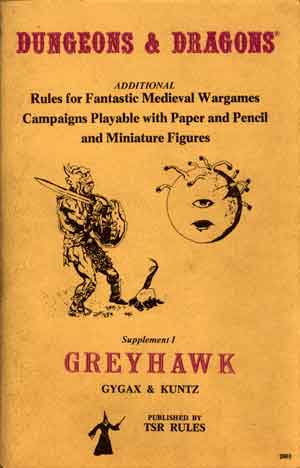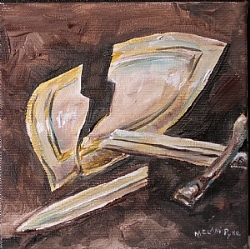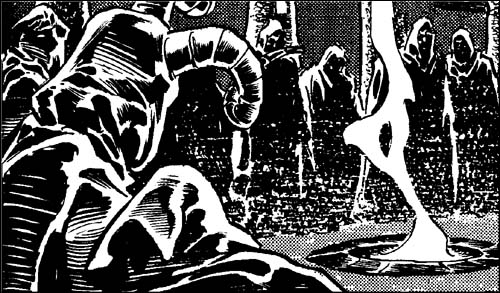Description : Ce plan, bien qu'il semble similaire au premier abord au monde primaire, est en fait assez différent de ce dernier quand on y regarde de plus près.
Il s'agit d'un monde couvert de terres arides parsemées de gigantesques citées où se rassemblent les humains (ainsi que les autres
races humanoïdes comme les elfes, les nains et les tinigens) s'étendant
sur des centaines de kilomètres et formant des gigantesques agglomérations
qu'il faut des jours et des jours pour traverser, et où les quartiers,
aussi grands que les bourgs du plan matériel, sont des zones autonomes à part entière, véritables villes à l'intérieur de la ville, entrelacs de ruelles labyrinthiques où règne la toute-puissante guilde des voleurs locale. Les guildes des différents quartiers se livrent à des guerres sans merci, leurs maîtres très craints intriguant depuis des manoirs feutrés aux allures de bastions construits au cœur de chaque quartier, tandis que loin au-dessus de la masse grouillante du peuple et du dédale formé par les constructions hétéroclites se dressent les tours et les minarets pourpres des magiciens, qui n'ont rien de commun avec leurs homologues du monde primaire. Ces sorciers vêtus d'écarlate et de mauve contemplent les astres depuis leurs demeures élevées qui surplombent les mégapoles, ne quittant jamais leurs observatoires et leurs laboratoires, et se servant de diverses et étranges créatures qu'ils convoquent grâce à leur magie très avancée, comme les chiens de l'enfer, ou façonnent de leur mains blêmes, comme les terrifiants golems, pour imposer leur domination et se confronter avec leurs semblables par interposition. Ils sont par ailleurs responsables de la création d'horreurs indicibles, comme les ours-hiboux (pour tenir à distance les importuns) ou les cubes gélatineux (afin de nettoyer leurs sombres demeures), qui se trouvent parfois relâchées (par inadvertance ou pas !) dans les rues de la ville...
Les égouts sont aussi le siège d'une présence maléfique : des tribus entières de rats-garous hantent les profondeurs des cités, complotant contre les humains et disputant le complexe souterrain aux à des cannibales blêmes et à leurs prêtres cruels, les druides .
Toutes les cités de Greyhawk sont ceintes par de colossales murailles basaltiques de plusieurs centaines de mètres de haut et plusieurs dizaines de larges. Patrouillées par les forces armées de différents ordres de guerriers saints, les paladins, ayant chacun pour emblème une arme d'hast spécifique (on peut par exemple citer les Frères de la Hallebarde, la Confrérie de la Sainte Pique et la Fraternité de la Blanche Guisarme), elles protègent la population citadines des horreurs qui rôdent dans les landes désolées qui séparent les villes les unes des autres. On peut citer à titre d'exemple les ours de cauchemar - des sortes de gobelins aux têtes de citrouilles
maléfiques et à la fourrure épaisse - qui chassent silencieusement la
nuit, se rassemblant en bandes, les nuées de striges buveuses de sang ou encore les harpies au chant sinistre. Insensés sont les voyageurs qui bravent ces étendues stériles, car les dangers sont grands et ont causé la mort de maintes expéditions et caravanes. Le commerce pouvant se faire entre les quartiers de la mégapole, il n'y a qu'une seule raison de s'aventurer ainsi en territoire hostile, la gloire et la richesse... en effet, on raconte que dans les ruines des anciennes civilisations disparues dorment des trésors inimaginables et des reliques antiques très prisées par les sorciers des villes. Mais là encore, le danger est grand, on raconte des rumeurs sur des magiciens transformés en non-morts par une magie puissante, des monstres métamorphes pouvant assumer une forme humaine, des ombres au toucher affaiblissant, des meutes de chiens esquiveurs, des araignées de phase, des bêtes éclipsantes, des tiques et des limaces géantes, des monstres rouilleurs, des charognards rampants, et des spectateurs au regard mortel... mais il est dit aussi que les braves et les valeureux reçoivent parfois l'appui de créatures singulières à la sagesse légendaire, les lammasu.
Les rares étendues d'eau qui viennent interrompre la monotonie du paysage sont toutes très salées, et leur voisinage n'est guère profitable à cause des groupes de tritons en maraude et des clans querelleurs d'hommes-lézards primitifs. De plus, de temps à autre, des lueurs spectrales attirent les aventuriers vers une mort certaine afin de se repaître de leur âme...
Les chaînes de montagnes qui balafrent la croûte terrestre sont le sujet d'encore plus de légendes : on raconte des histoires au sujet de volcans au cœur desquels naissent les salamandres, de forteresses géantes volant sur des nuages, de gouffres habités par des créatures aveugles, et de cavernes où vivent les dragons, divisés en deux camps antagonistes, celui des grands vers métalliques et celui de la reine maléfique multicéphale et de ses serviteurs ogres mages.









